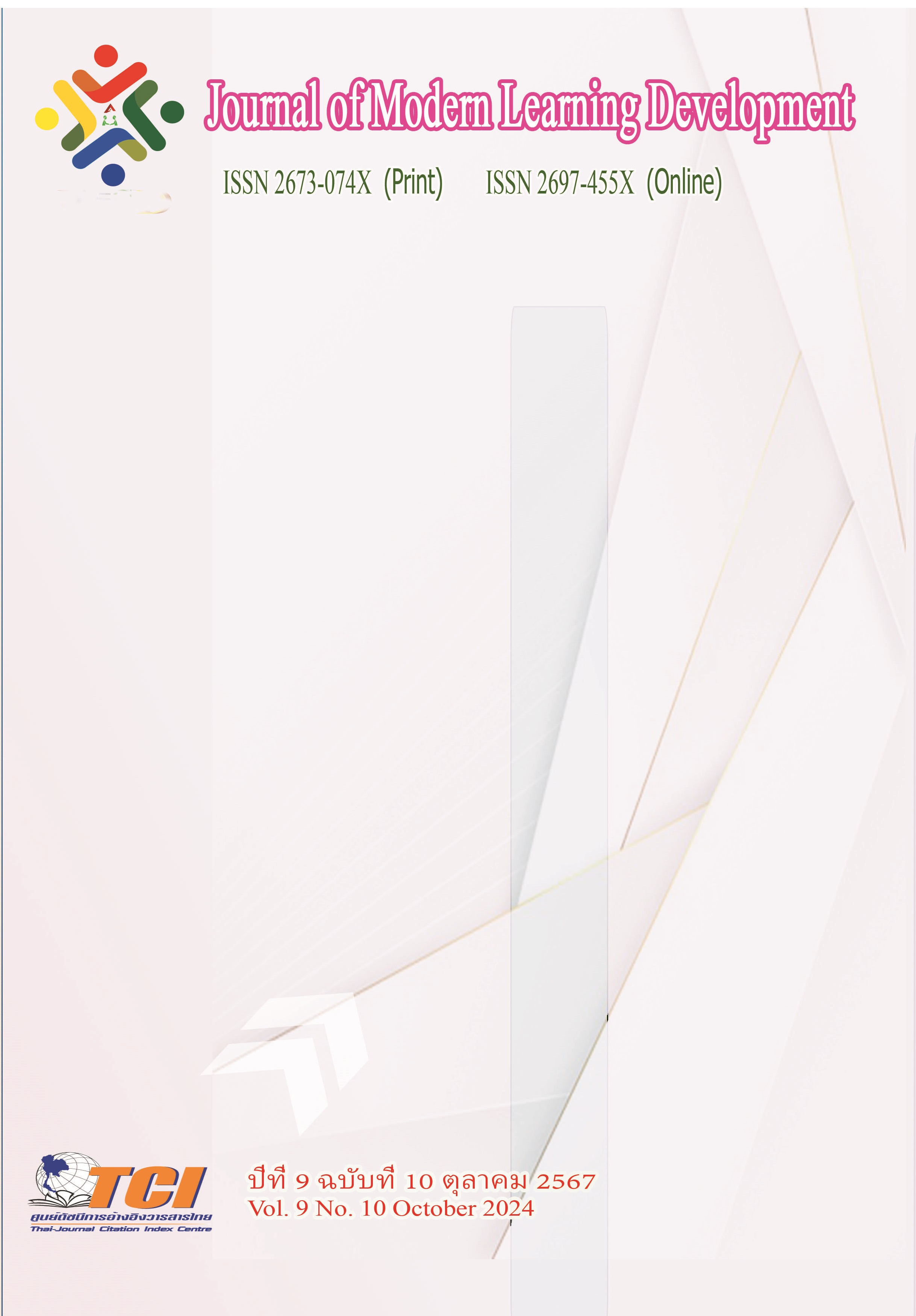Guidelines for the Management and Protection of Historical Commercial Areas in Huangshan Mountain Town, Anhui Province, People's Republic of China
Main Article Content
Abstract
This research objects to 1) study and analyze the current status of the protection of historical commercial areas in Huangshan City, People's Republic of China, and 2) analyze the management approach for the development of creative economy and propose management approach for the protection of historical commercial areas in Huangshan City.
This research is a qualitative research, using the literature review method from research works, articles and documents related to the current situation of historical commercial areas, field surveys, and in-depth interviews with 6 experts in architecture, landscape culture, and artists.
The results of the research found that 1) historical commercial areas are valuable and important, as historical commercial sites built during the Ming and Qing dynasties, especially Tunxi Ancient Street, which has Ming and Qing dynasty architecture, which is a unique characteristic of Huizhou City in Huangshan City. There are many commercial forms lined up along the historical street. Residents aim for business benefits, but lack knowledge and understanding of the protection and protection of historical and traditional cultural areas, including cultural ecology, which affects the protection and development of the area. 2) Management approach for the protection of commercial areas includes: 2.1) Economic development approach by improving commercial forms by integrating modern and traditional cultural industries to create contemporary culture, while preserving the identity of traditional culture. 2.2) Social development approach by creating community cooperation. To create participation in the protection of commercial areas, to carry out cultural activities continuously, and 2.3) Guidelines for environmental development by improving the cultural ecosystem, with the cooperation of stakeholders, residents of historical areas.
Article Details
References
Gao, Y. (2019). Thoughts on the protection of ancient cities from the perspective of cultural heritage studies: A case study of the historic center of Krakow, Poland. Art and Design: Theoretical Edition. (5), pp. 78-80.
Han Chen. (2016). Expression and inheritance of historical context in landscape design of traditional commercial blocks [D]. Hefei University of Technology,
Ju Dedong. (2016). "Opportunities and Challenges: Seminar on the Further Promotion of the Protection of Historical and Cultural Blocks" [J]. Urban Planning. (12), p. 7-8.
Liu Zhenhua. (2020). Research on the dynamic protection design strategy of the third phase of Harbin Daowai Historical Commercial Block [D]. Harbin Institute of Technology, DOI: 10.27061/d.cnki.ghgdu.
Shi, L. (2018). Renovation and repair of historical blocks: Taking Tunxi Old Street as an example. House. (6), p. 1.
Tang, Y. L. (2022). Research on the integration of culture and tourism in historical and cultural blocks: Taking Tunxi Old Street in Huangshan as an example (Doctoral dissertation). Ningxia University.
Wang Xiaoya. (2018). Research on the protection and renewal strategy of urban historical and cultural blocks [D]. Southwest University.
Wang, H. W., Li, Y., Zhou, Y. G., Tong, L., & Jin. F. S. (2020). Protection and Renewal Strategies for Shenyang Historic Areas. Planner, (SO1), 10.
Wu, Q. (2020). Research on the environmental improvement strategy of historical and cultural blocks in the new era (Doctoral dissertation). Anhui University of Architecture.
Zhang Xuan. (2019). Research on open space design under the scale and texture of historical blocks-taking Tunxi Old Street in Huangshan City as an example [D]. East China Normal University, 11.
Zhu, J. X. (2021). Comparison and sustainable development of Florence’s historic center and global historical cities from the perspective of world heritage. Sustainable Development. 11 (5), 9.


